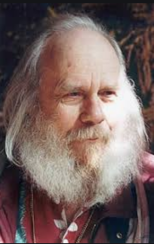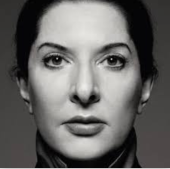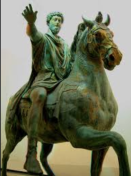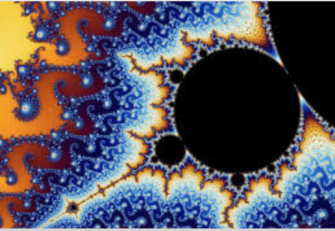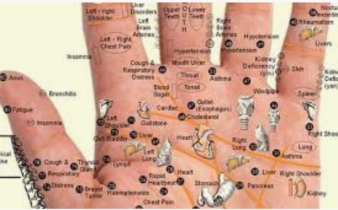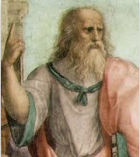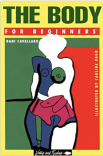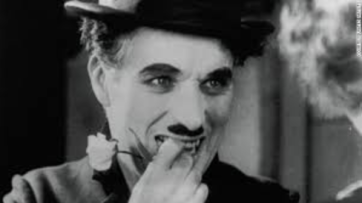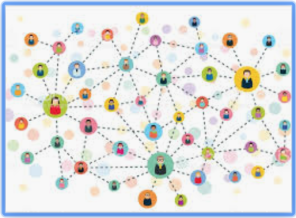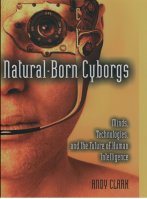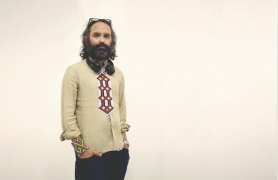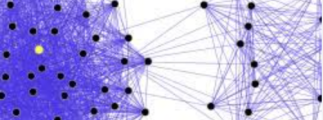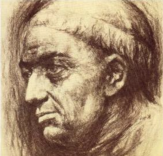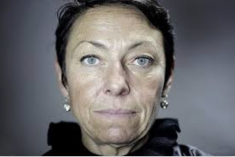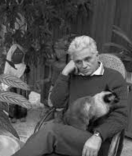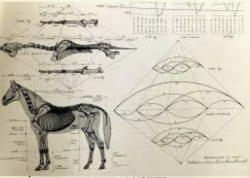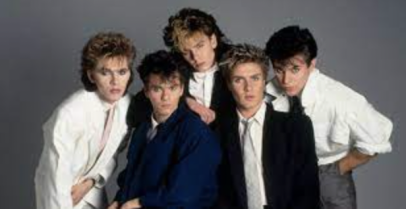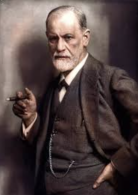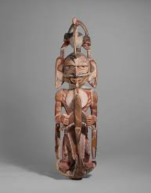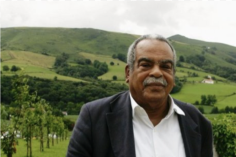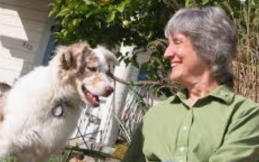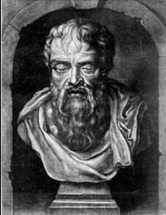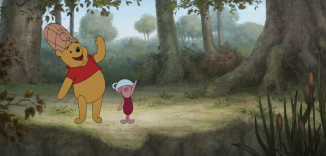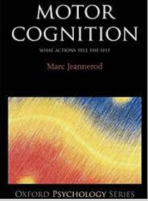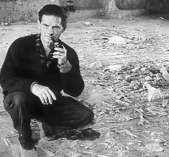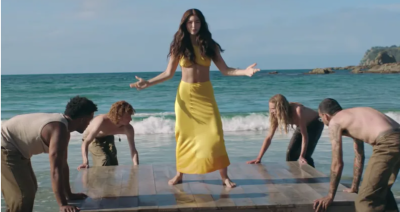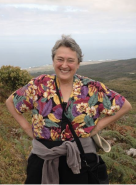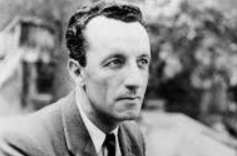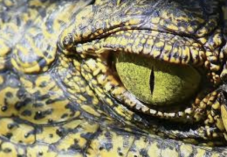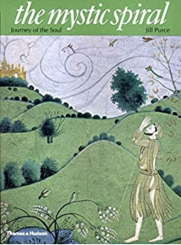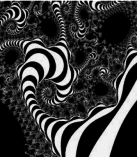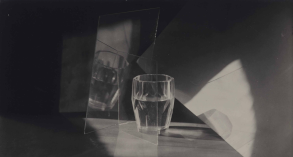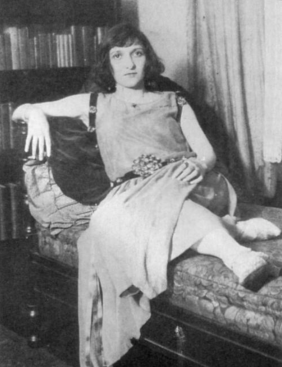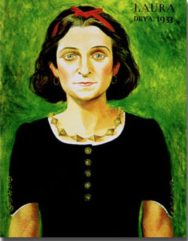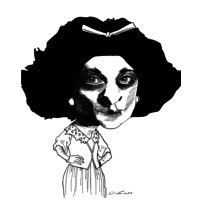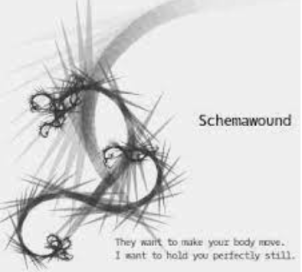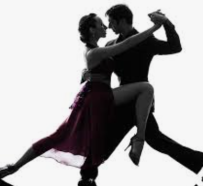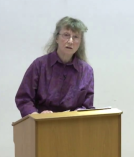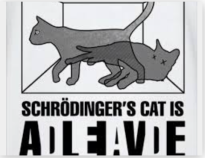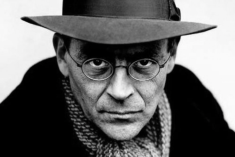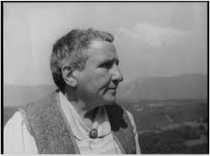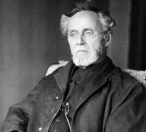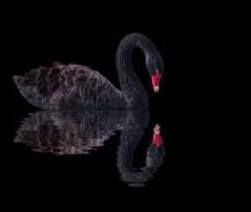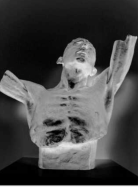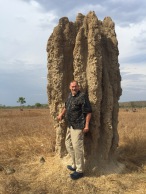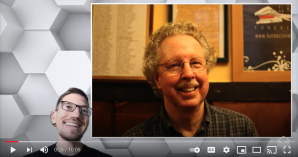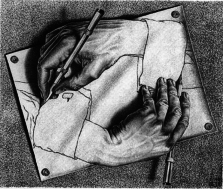Books and Other Media
<< New text box >>
This is an partial list of references that I have found useful, finding differnt voices who have been telling different parts of the story. Some will have brief comments, or quotes from the material. I'm including just author's name and title.
This is an ongoing project, and like the Body Schema itselft continuously updates.
Pulling on threads. This is how this page is assembled. This is how you might use it. Pick up a thread and give it a tug, see where it takes you; outside of the 'book' we hope.
At the top I put the few books specifically about Ortho-Bionomy, the bodywork.
Pauls, Arthur Lincoln
The Philosophy and History of Ortho-Bionomy
Canadian-born and British-trained osteopath, Pauls (1929-1997) is credited as the founder of Ortho-Bionomy. Pauls was a bit of a mess and so are we all. He did not live what we might call an exemplary life and the same is true of most of our 'saints' if not all.
The practice of orthobionomy requires we bring the whole self along in the interaction. All is "grist for the mill." Those bits that are walled off, excluded, need to be metabolized. A 'session' of orthobionomy is mutual metabolization.
Pauls vaporized Presence as the ur-technique. Nothing need be done, nothing broken, nothing to be fixed, simply be present. How can we be present if we begin by making judgment against ourself, a self-imposed exile?
Kain, Kathy L. & Berns, Jim
Ortho-Bionomy: A Practical Manual
A noble effort. Stays in the range of three dimensions. But a kudos for getting something out there.
Deig, Denise
Positional Release Technique: from a Dynamic Systems Perspective
Recognizes Ortho-Bionomy as a systems approach. Look for books on systems theory, e.g. Bertalanffy
Overmyer, Luan & Deig, Denise
Ortho-Bionomy: A Path to Self Care
Weber, Klaus G. & Weise, Michaela
Grundlagen der Ortho-Bionomy®
This is in German. I don't read German and have not read it. I look forward to hearing from someone who has.
Bienvenu, Alain
Le Corps el les Lois de la Vie (The Body and the Laws of Life): Introduction à l'Ortho-Bionomy®
This one is in French, I have read it and recommend it for those who can read in French. It conveys the feel of the work best of the books listed.
Abram, David
The Spell of the Sensuous
One of my favorite books. The first chapter is titled "The Ecology of Magic." Compare with Tobie Nathan, Doctors and Healers.
Abramovic, Marina
The Artist is Present (video)
People don’t understand that the hardest thing is to actually do something which is close to nothing. It is demanding all of you because there is no story any more to tell, there’s no objects to hide behind. There is nothing. There is just your pure presence; you have to rely on your own energy and nothing elsse.
Appiah, Kwame Anthony
Experiments in Ethics
Asma, Stephen
Following Form and Funtion: A Philosophical Archaeology of Life Science
"Structure governs function" was one of A.T. Stills precepts. Pauls often repeated these words as gospel. It is still frequently heard in Ortho-Bionomy. Modern ostopathy has corrected this misunderstanding, one of the tenets is "Structure and function are reciprocally interrelated." Asma goes into the history of this debate. Also has important things to say about concepts of part vs. whole.
Aurelius, Marcus
Meditations
You have power over your mind––not outside events. Realize this, and you will find strength. Everything we hear is an opinion, not a fact. Everything we see is a perspective, not the truth. Very little is needed to make a happy life; it is all within yourself, in your way of thinking.
Bachelard, Gaston
The Poetics of Space
I hesitate to cite this book. I just cannot escape his statement, "Life is round."
Evidence he gives comes from poets who may give a truer account than the scientists. I recommend doing a search and simply read some of his other titles, like The Psychoanalysis of Fire, The Philosophy of No. But there is little attention given to this topic, suggesting it is very important.
Bakhtin, Mikhail
Rabelais and His World
Available as free PDF:
https://monoskop.org/images/7/70/Bakhtin_Mikhail_Rabelais_and_His_World_1984.pdf
This book I find coloring so much of my thinking. The relation between Official World and Real World.
Bass, Ellen
The Thing Is
to love life, to love it even
when you have no stomach for it
and everything you've held dear
crumbles like burned paper in your hands,
your throat filled with the silt of it.
when grief sits with you, its tropical heat
thickening the air, heavy as water
more fit for gills than lungs;
when grief weights you like your own flesh
only more of it, an obesity of grief,
you think, How can a body withstand this?
then you hold life like a face
between your palms, a plain face,
no charming smile, no violet eyes,
and you say, yes, I will take you
I will love you again.
Ellen Bass is clearly a poet. This is clearly a poem. For a deeper study of this poem and why it is that poetic form extends the normal boundary of language) I urge you to the source I found the poem, see Housden entry further down below.
Bass reminds us, as we must be reminded of over and over, Don't exclude Grief. This can be a pitfall in Ortho-Bionomy (people misunderstand the "move away from pain," overextend the metaphore). A better catchphrase would be "metabolize the pain." (Thanks to Resmaa Menakem for this phrase, see Sources.)
I 'read' such a poem as this (and so many others) and I cannot by any strech call myself a Poet. I do confess I borrow from poetic techniques thus at least the aura of a poem appears. For several reasons I do this. Mostly because there are things that need be communicated about orthobionomy that a out of range of language. Can we language our way out of language? There's a Labyrinth. Is Poetry Ariadne's Thread? Coroming we glance over to Mythology. We are in Metaville. See the entry in Sources under Fred Rogers, actually about the movie A Beautiful Day in the Neighborhood. "Meta" is looked at there are well.
I also use the appearance of poetry as a sort of filter, a membrane. Some will come through and some will not: too much work. And that is how a number of poets play. They want you to work for it. Don't waste your (her) time if you're not willing to put some effort into it. Take for example most of the work (that I know) of Jorie Graham.
ASHES
Mancled to a whelm. Asked the plants to give me my small identity. No, the planets.
The arcing runners, their orbit entrails waving, and a worm on a leaf, mold, bells, a
bower––everything transitioning––unfolding––emptying into a bit more life cell by
cell in wind like this
sound of scriblling on
paper. I think
I am falling. I remember the earth. Loam sits
quietly, beneath me, waiting to make of us what it can, also smoke, waiting to
become a new place of origin, the other one phantasmal, trammeled with entry,
ever more entry––I spent a lifetime entering––the question of place hanging over med
privy to insect, bird, fish––are there nothing but victims––
that I could become glass––that after that we would become glacial
melt––moraine revealing wheatgrass, knotgrass, a prhistoric frozen mother's
caress––or a finger
about to touch
a quiet skin, to run along its dust, a fingernail worrying the edge of
air, trawling its antic perpetually imagined
end––leaping––landing at touch. A hand. On whom. A groove traversed where a god
dies. And silken before bruised. A universe can die, that we could ever have, or be
one body. Then picked up by the long hair
and dragged down through the shaft into
being. One. Now listen for the pines, the bloom, its glittering, the wild hacking of
sea, bend in each stream, eddy of bend––listen––hear all skins raveling,
unending––hear one skin clamp down upon what now is no longer
missing.
Here you are says a voice in the light, the trapped light. Be happy
––JORIE GRAHAM
“Science without religion is lame, religion without science is blind.”
– ALBERT EINSTEIN
Barrow, John D.
The Artful Universe: The Cosmic Source of Human Creativity
In the past, the humanities and the sciences of human behaviour have been dominated by their celebration of the diversity of human behaviour. Anthropologists were delighted to find new customs, novel habits, and different practices the world over. Common factors were ignored as uninteresting. Sometimes it became a little too easy to find what one was looking for. As any skilled cross-examiner knows, it is easy to find the truth one wants; not by inventing it, but by allowing the emergence of only that part of the whole truth that one wants to hear. A perspective that saw context, culture, and learning as the sole determinant of human behaviour thus made unquestioned progress. In contrast, we have in this book focused on the common factors of human experience. We believe that they are potentially of greater importance than the differences and, as scientists found long ago, much the easier to study. They link us to the universalities of the ancient environments in which the evolution of life occurred over enormous periods of time, long before the advent of civilization and recorded history; and they link us ultimately to the structure and origin of the Universe. The study of human actions, human minds, and human creativity has been quick to see complexity; a little too easy to find what one was looking for. As any skilled cross-examiner knows, it is easy to find the truth one wants; not by inventing it, but by allowing the emergence of only that part of the whole truth that one wants to hear. A perspective that saw context, culture, and learning as the sole determinant of human behaviour thus made unquestioned progress. In contrast, we have in this book focused on the common factors of human experience. We believe that they are potentially of greater importance than the differences and, as scientists found long ago, much the easier to study. They link us to the universalities of the ancient environments in which the evolution of life occurred over enormous periods of time, long before the advent of civilization and recorded history; and they link us ultimately to the structure and origin of the Universe. The study of human actions, human minds, and human creativity has been quick to see complexity; slow to appreciate simplicity. Science, quick to see uniformity, has at last begun to appreciate diversity; but there is much for the creative arts to learn from the unity of the Universe about the propensities of our senses and the sights and sounds that excite them. And science, in its turn, will discover much about the emergence of complex organized structures from a renewed study of the mind’s most artful inventions: a place where two ways meet.
Bateson, Gregory
Mind and Nature: A Necessary Unity
Steps to an Ecology of Mind
Many thanks to my friend and colleaugue in orthobionomy, (http://elewis.freeshell.org/) for gently directing me back to Bateson until I am old and wise enough to start to get what he was saying.
Bennett, Hal Zina
The Lens of Perception
Berger, Peter L. & Luckman, Thomas
The Social Construction of Reality: A Treatise in the Sociology of Knowledge
Not to be confused with the Construction of Social Reality by John R. Searle.
Berkman, Lisa & Kawacchi, Ichiro
Social Epidemiology
Bertalanffy, Ludwig von
General Systems Theory: Foundations, Development, Applications (Revised Edition)
Birdwhistell, Ray L.
Kinesiology and Context: Essays on Body Motion Communication
Should be required reading for Ortho-Bionomy Phase 5 understanding. 'Kinesics' should not be confused with 'kinesiology.' The latter confuses itself with itself. There is the valid use of muscle testing as used by physical therapists, described beautifully by Florence Patterson Kendall in Muscles: Testing and Testing and Function with Posture and Pain as opposed to the Applied Kinesiology of Frost and Goodheart and all the spinoffs typically used to try to sell you something you don't need.
Bookchin, Murray
The Philosophy of Social Ecology
<< New text box >>
Borges, Jorge Luis
Simplicity
with the docility of a page
that frequent devotion questions
and inside, my gaze
has no need to fix on objects
that already exist, exact, in memory.
I know the customs and souls
and that dialect of allusions
that every human gathering goes weaving.
I've no need to speak
nor claim false privilege;
they know me well who surround me here,
know well my afflictions and weakness.
This is to reach the highest thing,
that Heaven perhaps will grant us:
not admiration or victory
but simply to be accepted
as part of an undeniable Reality,
like stones and trees.
Briggs, John & Peat, David F.
Turbulent Mirror: An Illustrated Guide to Chaos Theory and the Science of Wholeness
Brooks, Daniel R. and Wiley, E.O.
Evolution as Entropy: Toward a Unified Theory of Biology
If you want to really dig into ideas like "laws of life" you can't ignore entropy. If you want to understand what Pauls called Phase 7 you try to get a handle on entropy. Of course for it to work you needn't bother with such antechnical cognitive exercise. See also Schneider & Sagan, below.
Brown, Stuart
Play: How it Shapes the Brain, Opens the Imagination, and Invigorates the Soul
Brothers, Leslie, M.D.
Friday's Footprint: How Society Shapes the Human Mind
Argues the view of pragmatic philosophy the mind is created by community. [I prefer to say mind is an emergent quality of community.] There is an interpersonal dimension to embodiment.
Bryant, Levi R.
The Deomocracy of Objects
Evolution as construction—evolution is not a matter of organisms or populations being molded by their environments, but of organism-environment systems changing over time.
Brown, Stuart
Play: How it Shapes the Brain, Opens the Imagination, and Invigorates the Soul
https://www.ted.com/talks/stuart_brown_play_is_more_than_just fun
Chaplin, Charley
Smile even though it's breaking
When there are clouds in the sky, you'll get by
If you smile through your fear and sorrow
Smile and maybe tomorrow
You'll see the sun come shining through for you
Hide every trace of sadness
Although a tear may be ever so near
Smile, what's the use of crying?
You'll find that life is still worthwhile
If you just smile
https://www.youtube.com/watch?v=MyoxvdAA_54
https://www.youtube.com/watch?v=GAQfwpEDdOw
Charon, Rita
Narrative Medicine: A Model for Empath, Reflection, Profession, and Trust. JAMA. 2001;286:1897-1902
Christakis, Nicholas A. and Fowler, James H.
Connected: The Surprising Power of Our Social Networks and How They Shape Our Lives -- How Your Friends' Friends' Friends Affect Everything You Feel, Think, and Do
Christakis has two TED talks that are worth watching. Start with them and if you need more, get the book. Their research is being used to study and predict the spread of epidemics within human networks. Particularly relevant in this time of Covid-19. I was going to get around to including this book as an important source because I always reference it when teaching that aspect of Ortho-Bionomy known as "Phase 7." It gives a scientific validation to aspects of that part of the practice. Covid-19 caused me to recall what these authors call the negative aspects of being socially connected.
You can find the Christakis TED talks HERE.
Clynes, Manfred
Sentics: The Touch of Emotions
Clynes, Manfred & Panksepp, Jaak
Emotions and Psychopathology
Coccia, Emanuele
Metamorphoses
"Every species is the metamorphosis of all those that preceded it. One and the same life, cobbling together a new body, a new form, in order to exist differently."
"Life is always the reincarnation of that which is not alive, a cobbling together of mineral elements, a carnival of the telluric substance of a planet – Gaia, the Earth – which continually presents new faces and creates new modes of being out of even the smallest particle of its disparate, heteroclite body. Every self is a vehicle for the Earth, a vessel that allows the planet to travel without moving."
There is also this article
"What Would Susan Sontag Say?"
which I stumbled across. It may or may not be relevant to this 'book' but I want to bookmark it, interested in what Prof Coccia has to say.
The Life of Plants
"Plants are the always open wound of the metaphysical snobber that defines our culture."
Cohen, Jack & Steward, Ian
The Collapse of Chaos: Discovering Simplicity in a Complex World
Cole, Allysin M. & Lee, Kyoo (eds)
Safe. Women's Studies Quarterly. Vol 39. Numbers 1 & 2. Spring/Summer 2011
Dance, Frank E.X.
Human Commiunication Theory
Notable for me for the essay by B. Aubrey Fisher
Damasio, Antonio
Descarte's Error: Emotion, Reason, and the Human Brain
The Feeling of What Happens: Body and Emotion in the Making of Consciousness
Self Comes to Mind: Constructing the Conscious Brain
The Strange Order of Things: Life, Feeling, and the Making of Cultures
Looking for Spinoza: Joy, Sorrow and the Feeling Brain
Damasio keeps writing books and I find it hard to straight what I read in which one. I may have to reread them.
Despret, Vinciane
Our Emotional Makeup
We act like we know anything about 'emotions' as we teach classes titled "Ethics and Emotional Issues." This book tells Me we are correct to have Phases in Ortho-Bionomy but need to figure out what that is telling us about the Body.
What Animals Would Say If We Asked the Right Questions.
An abcdary
Derrida, Jacques
Derrida and Negative Theology
Only one chapter is actually by Derrida, mostly the book is about him. There is a line from Nicolas of Cusa and Jacques Derrida. I might argue that orthobionomy is apophatic (negative) therapy.
"––More than one, it is necessary to be more than one to speak, several voices are necessary for that . . ."
I want to use that quote somewhere as it speaks to me of Phases. Fir now I capture it here. Should I go on? That's only half. The whole of it is a can of worms.
"––Yes, and par excellence, let us say exemplarily, when it's a matter of God . . ."
See what I mean? It introduces religion, which can be a dangerous thing to do.
Devine, William H., DO
Chapman's Reflexes and Modern Clinical Applications
Withe a Theoretical and Clinical Introduction to Chapman's Reflexes
http://files.academyofosteopathy.org/convo/2016/Handouts/Devine_SAAOLecture.pdf
This is a detailed review of pretty much all that I do not teach about Chapman's Reflexes. Don't want to take up class time with what you can learn elsewhere. I prefer to put the focus elsewhere. Everyone's looking at it that way, how about we look at it this way? This is in part how some magic works; playing with the invisible realities. Even a study such as osteopathy, which prides itself in being committed to a holistic view, can't resist the reductionism, thus cannot see the forest. Looking at what gets neglected, telling your story with a different story,can be a super-efficient way of doing things. Stories get things done and what you can do depends in part on what story you are using.
Now if you want to tug on this last thread you might jump to Lewontin below, Biology as Ideology.
Donaldson, Thomas and Werhane, Patricia H.
Ethical Issues in Business: A Philosophical Approach
Duran Duran
Eriksson, Katie
The Suffering Human Being
Ekman, Paul & Davidson, Richard J. (eds)
The Nature of Emotion: Fundamental Questions
What do we really know about emotions and thereby "emotional issues?" If you want to get into the topic this is one place (particularly recommend the essay on "mood' for all you Phase 5 Ortho-Bionomy students). Before this book, though, I would invite you to dive first into Despret, Our Emotional Makeup as well Damaio's The Feeling of What Happens.
Freud, Sigmund
Freud is hard to avoid. I've read none of him. Freudianism and psychoanalysis feel creaky to me. I do tend to go to secondary sources and commentaries. Let someone else do the hard work of deciphering. But the commentators seldom agree. "This is what the Great One was saying," says one. "You are missing the point," another retorts. So according to one apologist Freud's core insight was to assert "that our innermost truths only ever manifest themselves as distortions. Read attentively, our dreams, errors, jokes and symptoms – in short, our everyday lives – reveal us as masters of disguise, as unrecognizable to ourselves as to others" (Josh Cohen, How to Read Freud). We are other than what we think we are.
Fried, Michael
Art and Objecthood: Essays and Reviews
Absorption and Theatricality: Painting and Beholder in the Age of Diderot
His writing about minimalism as well as his introspections on how the observer is placed in relation to other, how the degree of absorption determines how the other is experienced, what kind of knowledge is gained.
Frith, Chris & Wolpert, Daniel
The Neuroscience of Social Interaction: Decoding, Imitating, and Influencing the Actions of Others
Gallagher, Shaun
Hand and Brain: The Neurophysiology and Psychology of Hand Movements
How the Body Shapes the Mind
Gallagher, Winifred
The Power of Place: How our Surroundings Shape Our Thoughts, Emotions, and Actions
Glissant, Edouard
Poetics of Relation
This book just arrived was laying next to me as I was writing. Multiple thoughts came clashing together and writing jolted to a stop. What to do? I thought I'd pause a moment, see what this book is about. I let my thumb find a page and eye a paragraph, random, to read. It was this:
It is not just literature. When we examine how speech functions in this Plantation realm, we observe that there are several almost codified types of expression. Direct, elementary speech, articulating the rudimentary language necessary to get work done; stifled speech, corresponding to the silence of this world in which knowing how to read and write is forbidden; deferred or disguised speech, in which men and women who are gagged keep their words close. The Creole language integrated these three modes and made them jazz.
It is understandable that in this universe every cry was an event. Night in the cabins gave birth to this other enormous silence from which music, inescapable, a murmur at first, finally burst out into this long shout––a music of reserved spirituality through which the body suddenly expresses itself. Monotonous chants, syncopated, broken by prohibitions, set free by the entire thrust of bodies, produced their language from one end of this world to the other. These musical expressions born of silence: Negro spirituals and blues, persisting in the towns and growing cities; jazz, beguines, and calypso, bursting into barrios and shantytowns; salsas and reggaes, assemble everything blunt and direct, painfully stifled, and patiently differed into this varied speech. This was the cry of the Plantation, transfigured into the speech of the world.
I then picked up my writing right where I'd left off. But changed.
Goldstein, Kurt (Foreward by Oliver Saks)
The Organism
A Classic. A text for the course, Anatomy &Physiology of the Extended Body. Goldstein is also important, along with Henry Head, in beginning to open up our understanding of traumatic stress.
Gholipour, Bahar
A Famous Argument Against Free Will Has Been Debunked
The Atlantic. September 10, 2019
https://www.theatlantic.com/health/archive/2019/09/free-will-bereitschaftspotential/597736/
Graziano, Michael S. A. (audiobook)
The Spaces Between Us: A Story of Neuroscience, Evolution, and Human Nature
One of our leading neuroscientists explains in easy language
This is one place you will find the story about the lab monkey I refer to here and there. This simple observation has lots of ramifications, especially in regards to trauma. I've transcribed that bit of the book. I make reference to this story also in my page named "Aura."
A little girl monkey was in a large enclosure filled with climbers and toys that we had collected for her enjoyment. She used to exercise in that enclosure a few hours a day and I would sometimes sit quietly in a corner and watch just for the pleasure of seeing an excited and playful simian. She would bounce around the place like a gas molecule. On one occasion as I was watching, I began to notice something peculiar. The pattern was so subtle that I had to collect data in a notebook to see it. Her movements seemed random, jumping to whatever caught her fancy. But when averaged over time, they formed a kind of a donut. She simply never went into a specific part of the enclosure. Right at the center of that taboo zone was a stuffed toy monkey that we had put in for her amusement. It obviously didn’t amuse her. She didn’t scream at it, face it, grimace at it, cringe away from it, show any fear or any anxiety. She didn’t show any overt reaction at all. But her ongoing behavior was profoundly shaped by it. She knew it was there and kept a specific distance from it as if it were ringed by a magic circle. Of course the magic circle was actually around her. It was her safety buffer, with respect to a freaky monkey with button eyes. Animals have a safety buffer with respect to threatening objects, predators, and even other individuals of the same species.
Grush, Rick
The emulation theory of representation: Motor control, imagery, and perception
https://cseweb.ucsd.edu//classes/fa07/cse87-b/papers/grush-em.pdf
Halberstam, Judith and Livingston, Ira (Editors)
Posthuman Bodies
Selected nearly at random, from "Two Lessons from Burroughs"by Steven Shaviro:
Organicism is a myth, our words and texts are never really our own. They aren't "us," but the forces which crush us, the norms to which we have been subjected. It's a relief to realize that culture is after all empty, that its imposing edifices are sound stage facades, that boies are extremely plastic, that facial expresssions are maskes, that words in fact have nothing to express. Bodies and words are nother but exchange value: commodities or money. all we can do is appropriate them, distort them, turn them against themselves. All we can do is borrow them and waste them, spend what we haven't earned and don't even posess. Such is my definition of postmodern culture, but it's also Citibank's definition of a healthy economy, Jacques Lacan's definition of love, and J.G. Ballards's vision of life in the postindustrial ruins. So don't be a good citizen. Don't produce, expand. Be a parasite. Live off your Visa card, or scavenge in the debris.
And a bit further on,
Every mutation in culture is a new state of the body. Technological changes, as McLuhan said, are alterations in the very nature of your senses and of our nervous systems.
With that in mind, you might check out what Turner teaches us about the extended organism.
Hall, Michael T.
The Hidden Dimension
An influential American Anthropologist here gives us the word proximics.
Beyond Culture
The Silent Language
Dance of Life: The Other Dimension of Time
Harari, Yuval Noah
Sapiens: A Brief History of Humankind
Should be required reading for all humans. It's surprisinglhy a page-turner. His later books are also to be recommended. Start with this one then you are on your own for the rest.
Harraway, Donna
Staying With the Trouble
Ms Haraway has many YouTube videos as a distinguished lecturer. They give a good introduction to her style of communication. I have a strong suspicion if we followed the guidance of Donna and some of her friends things would wobble back onto an ongoing track.
It matters what we use to think other matters with; it matters what stories we tell to tell other stories with; it matters what knots knot knots, what thoughts think thoughts, what descriptions describe descriptions, what ties tie ties. It matters what stories make worlds, what worlds make stories.
Harman, Graham
Object-Oriented Ontology: A New Theory of Everything
Hasekll, David George
Songs of trees
A botanist and a poet and a really good storyteller.
Hass, Robert
A Little Book on Form: An Exploration into the Formal Imagination of Poetry
Heraclitus
Fragments (On Nature)
He wrote his one book around 500 BC. He is said to have written a single book (papyrus roll) and deposited it in the great temple of Artemis at Ephesus. What has survived the centuries are known simply as The Fragments.
Here is where I land in looking Westernward for roots or orthobionomy plilososophy.
- Ever-present change, movement, "flux." "No man ever steps in the same river twice" and panta rhei ("everything flows"). He used 'fire' as a metaphor.
- unity of opposites and harmony in the world. He denied the law of non-contradiction (LNC), pissing off Aristotle). I suspect he would also argue with the law of the excluded middle
- Syntactical ambiguity in the form of the writing
- looked deeply at the relation of word to world, his logos, influencing Plato here and thus pretty much everyone.
- he loved wordplay
I can see his thinking fitting well with the 2nd Law of Thermodynamics and some of the most basic principles of orthobionomy and diagramed as 'Phase 7' of Ortho-Bionomy.
Hildyard, Daisy
The Second Body
Horkheimer, Max and Adorno, Theodor W.
Dialectic of Enlightenment
Towards a New Manifesto: Freedom means not having to Work
Houston, Roger
ten poems for difficult times
Hultkrantz, Åke
Shamanic Healing and Ritual Drama: Health and Medicine in Native North American Relgious Traditions
Jahanshahi, Marjan & Hellett, Mark (editors)
The Bereitschaftspotential: Movement Related Cortical Potentials
Kalamaris, George
Reclaiming the Tacit Dimension: Symbolic form in the Rhetoric of Silence
The goal of this book is to authenticate silence as a mode of knowing. As such, I am arguing, silence is a condition of emptiness that is, paradoxically, full.
Kauffman, Stuart
- Origins of Order: Self-Organization and Selection in Evolution
- At Home in the Universe: The Search for the Laws of Self-Organization and Complexity
- Reinventing the Sacred
I ... propose a worldview beyond reductionism, in which we are members of a universe of ceaseless creativity in which life, agency, meaning, value, consciousness, and the full richness of human action have emerged. But even beyond this emergence, we will find grounds to radically alter our understanding of what science itself appears able to tell us. Science cannot foretell the evolution of the biosphere, of human technologies, or of human culture or history. A central implication of this new worldview is that we are co-creators of a universe, biosphere, and culture of endlessly novel creativity.
Stuart Kauffman is an American medical doctor, theoretical biologist, and complex systems researcher who studies the origin of life on Earth. He was a professor at the University of Chicago, University of Pennsylvania, and University of Calgary. He is currently emeritus professor of biochemistry at the University of Pennsylvania and affiliate faculty at the Institute for Systems Biology. He has a number of awards including a MacArthur Fellowship and a Wiener Medal.
The first two of his several books listed here are thick, dense, and often technical. The third is much more accessible. His research and speculations suggesting that life is self-created is highly relevant to principles of orthobionomy.
Keller, Catherine
Cloud of the Impossible: Negative Theology and Planetary Entanglement
"It is the theory which decides what we can observe."
– ALBERT EINSTEIN
Kilpi, Eeva
A Landscape Blossoms Within Me
A landscape blossoms within me
and only its evanescence
separates it from the nature all around.
The two are merging together,
melting into each other with no boundaries
and the place where my soul’s house once stood
is becoming overgrown.
Only a few stones that I’ve heaped
on the shoulders of those close to me
will be there, gathering moss,
and maybe a rose, a midsummer rose
that I’ve planted
will bloom amid the long hay,
and the achillea and the iris and the apple trees
will grow from the seeds that I’ve let fall
beside the path, on the way to the sauna,
and maybe the butterflies, from generation to generation,
of all things the most fragile,
and my adder and my lizard, and my frog
will be happy here.
At last it will belong to them entirely
as was meant from the start.
It’s past now, this time
of humans at the centre of things
and the era of nature is beginning in me now.
My dreams are coming to pass like a resurrection
and everything bears witness to the faith.
Kimmerer, Robin Wall
Braiding Sweetgrass: Indigenous Wisdom, Scientific knowledge, and Teaching of Plants
Kregan, Kate
The Sociology of the Body
Reviews multiple theorists relocating the gaze on human embodiment.
Kuchera, William A. & Kuchera Michael L.
Osteopathic Principles in Practice
Posture is more than physical curves stacked one on another with musculoligamentous connectors; posture is influenced by the patient's emotional-spiritual self. "Posture to a large degree is also a somatic depiction of the inner emotions. There is no doubt that posture can be considered a somatization of the psyche."
Kuhn, Thomas
The Structure of Scientific Revolutions
Lantham, Richard A.
Style: An Anti-Textbook
Style is where and how form and function intersect and interact. Style can keep you from being proctrustean. This book written for writers had a far wider application.
Latour, Bruno
Down to Earth: Politics in the New Climatic Regime
Trained as an anthropologist Latour's discipline might be called Philosophy os Science. With a whole shelf of titles, he is usually not an easy read. This, his most recent, is probably his most down to earth. He asks here some really good questions. There are many hours of taped lectures by him available on YouTube that are somewhat more accessible but his French accent makes them a bit of a challenge as well. A very important thinker. He also argues for the inclusion of Arts and Humanities in approaching the problem of climate change.
Lee, Paul /R.,
Interface: Mechanisms of Spirit in Osteopathy
Hold on tight to you skepticism if you dive into the details in this book. I think he could find sounder sources for his evidence. Make allowances for the dualism the overarching message is that body and spirit are indifferentiable and this needs to be brought into the spotlight in learning body practices.
Lehrer, Jonah
Proust Was a Neuroscientist
Lewin, Roger
Complexity: Life at the Edge of Chaos
Lieberman, Matthew D.
Social: Why Our Brains Are Wired to Connect
Lorde
Solar Power
[Verse 1]
I hate the winter, can't stand the cold
I tend to cancel all the plans (so sorry, can't make it)
But when the heat comes something takes a hold
Can I kick it? Yeah, I can
[Pre-Chorus]
My cheeks in high color, overripe peaches
No shirt, no shoes, only my features
My boy behind me, he's taking pictures
Lead the boys and girls onto the beaches
Come one, come all, I'll tell you my secrets.
I'm kinda like a prettier Jesus
[Chorus]
Forget all of the tears that you've cried
It's over (Over, over, over, over)
It's a new state of mind
Are you coming, my baby?
[Verse 2]
Acid green, aquamarine
The girls are dancing in the sand
And I throw my cellular device in the water
Can you reach me? No, you can't (Aha)
[Pre-Chorus]
My cheeks in high color, overripe peaches
No shirt, no shoes, only my features
My boy behind me, he's taking pictures
Lead the boys and girls onto the beaches
Come one, come all, I'll tell you my secrets.
I'm kinda like a prettier Jesus
[Chorus]
Turn it on in a new kind of bright
It's solar (Solar, solar, solar, solar)
Come on and let the bliss begin
Blink three times when you feel it kicking in
[Outro]
That solar-olar-olar power
Solar-olar-olar power
Solar-olar-olar power
Solar-olar-olar power
Solar-olar-olar power
Solar-olar-olar power
Maclaren, Kym
Manzotti, Riccardo
The Spread Mind: Why Consciousness and the World Are One
From his Introduction:
Margolis, Howard
Pattern, Thinking, and Cognition: a Theory of Judgment
We should think about what it means when we talk about "pattern." We should think about what it means to talk about "no judgement."
Mauss, Marcel
Techniques of the Body
https://monoskop.org/images/c/c4/Mauss_Marcel_1935_1973_Techniques_of_the_Body.pdf
The Gift
A classic in anthropological literature. Relevant to concept of reciprocity.
Mayr, Ernest
What Evolution Is
Menakem, Resmaa
My Grandmaother's Hands
Midgley, Mary
The Myths We LIve By
Midgely is a recently deceased and highly respected scholar of moral philosophy. Usually we avoid tomes of moral philosophy like the plague. Here she is not only readable but entertaining. Involves some philosophy of science.
Phenomenology of Perception
A basic text for any study of the body. Not an easy read. Don't get the Kindle edition, it is an impossible read.
The Visible and the Invisible
Here is a PDF of the book.
Moseley, Lorimer G.
Robert McCall is quoted, "There are two kinds of pain in this world, the pain that hurts and the pain that alters." That's rather oversimplified but if you want to understand pain and how it works, and how it can be turned into pain that alters, Lorimer Moseley is a good plac to start and a good (and free) way to start with him is this TEDx talk: https://www.youtube.com/watch?v=gwd-wLdIHjs. This is an entertaining introduction to Moseley, Professor of Clinical Neurosciences and Research chair in Physiotherapy at the University of South Australia, Adelaide. From here you may want to check out his books, such as this one I have:
Pain Stories: Metaphors and Stories to Help Understand the Biology of Pain
Nathan, Tobie & Stengers, Isabelle
Doctors and Healers
An excerpt:
‘Come on!’, my critic will no doubt interrupt me immediately. ‘You don’t actually believe in tarot cards and other such clairvoyant stuff?’
’Not so fast. Why do you already want to cast aspersions? Wait! Let me elaborate on my idea … If one submits to the kind of investigation that you seem contemptuous of, then disorder is necessarily seen in a particular way. It then becomes a sign of an obligation to be interested in the richness of the world and the multiplicity of beings that inhabit it. In these worlds, disorder always ends up being a tangle in the lines of communication, a crossroad, just at the point where the universes are superimposed … Ah, my friend, you have to eliminate the words “belief” or “believe” from your vocabulary. Take my word for it, no one, anywhere, believes in anything! A divinatory apparatus is always a creative act. It institutes the interface among universes; it makes them palpable and then thinkable. So, will you carry on as you were, telling yourself that these systems are made out of naive thinking, founded on the “childish” credulity of ignorant peoples? For my part, I’d rather think of them as unleashing an extraordinarily complex machinery designed to create links, a consummate art for multiplying universes. Because such inquiries, basically directed towards what is hidden, displace any interest centred on the ill person (as always, prone to stigmatization). They displace him or her:
1. towards the “invisible”;
2. from the individual to the collective;
3. from the inevitable to the reparable.
But for that to happen we still need the existence of a hidden world, a secret world, known only to the masters of the secret. On the other hand, the scientist, as you know, investigates symptoms, naturally via the intermediary of the patients themselves, because no illness can escape the one real world, that described by academic psychopathology. I have recently discovered that scientific research is never trying to discover worlds, just to extend its own. [emphasis added.] In our universe, if it occasionally happens that we think that some disorder is not known, we still deem it to be potentially knowable. Perhaps the scientist will discover it one day and give it his name – “Charcot’s Disease”, “the Bleuler Syndrome”.
It is for this reason that all cultural worlds with multiple universes have recourse to divination while all those with one universe use diagnostics.’
‘That’s an interesting suggestion; it gives me food for thought. Can you tell me more?’
Statistical categories vs real cultural groups
‘I could add that, when he starts divining, the master of hidden knowledge has an implicit aim. This is to find out about the sick person’s unexpected membership attributes and thus ultimately to assign him or her to a group. For example, a particular child might be someone exceptional, likely to “eat” his own parents. No one knew it at the time, but when he was in his mother’s womb he was accompanied by a twin whom he devoured when they were foetuses. So he belongs to the large inter-ethnic family of twins, those obscure beings that are best protected, respected and honoured if one is not to ask for trouble. Rest assured, this sufferer will emerge from his course of therapy having discovered a new sense of belonging, thinking of himself in the fellowship of twins. He will submit to the protective rituals of his new group and will respect the special dietary restrictions, etc.
On the other hand, the aim of the “scientist” is always to cut the subject off from his universe and his possible affiliations and also to submit him, just like everybody else, and especially as a sole individual, to the implacable and blind “laws of Nature”. But what is the scientist working on here? What objective does he have in mind as he suppresses all real groups – twins, those possessed by Yoruba divinities like Ogún, Shangó or Sakpatá, sorcerers, witch-hunters, ancestors – all these groups that constitute indispensable links in the elaboration of therapies? The answer seems obvious to me: it is simply a case of him increasing his clientele. Because when it comes to psychopathology, medicine and its derivations, wherever it sets itself up with its foot soldiers (doctors), its quartermasters (pharmaceutical laboratories), its judges (the scientists who sort the “real” from the “false”, what exists and what is in the “imagination”), it always has the effect of breaking down memberships. As soon as you set up a dispensary in Bamako, you will no longer see any Bambaras, no more Dogons, nor any Puels; just “subjects”, who quickly become empty envelopes; they are subjected. They are “hooked” on prescriptions; they are Largactyl-Nozinan-Anafranil-Prozac “junkies”.’ ‘Ah, you are annoying me with your military and third world talk,’ my critic replies. ‘Don’t you think that you are spoiling an argument that began nicely enough by corrupting it with these criticisms of the medical establishment that must look a bit suspicious?’
Netherby, Margaret
Some of My Seasons
A volume of poetry from fan early orthobionomer, founder and first editor of the Ortho-Bionomy Newsletter. Here is a sample:
The Mantle
Long ago when I was cold and lonely
My mother taught me to sew
The seams of my life
Into a chemeleon-colored cloak,
The fabric woven if smiles and pleasing grace.
"This coat will see you through everything," she daid
It was my mother's best give
Passed through generations unto me.
The mantle made for my protection,
I learn, is neither opaque or cloth.
The glass mantle that shelters my back
Is stuck fast
To my flesh, my spine, my words.
And now,though I ache to lay it down,
I cannot just do that.
But when Iook through the lens of other's tears
The brittle garment shatters
One piece at a time,
And I bleed my own sorrows
Like spilled wine.
Nicolas of Cusa
De Docta Ignorantia (On Learned Ignorance)
A blend of theology and mathematics. An interesting book for those who are exploring 'nothing'. Nicolas, was a high priest of the Holy Roman Empire and a mathematician who anticipated Copernicus and Newton. He looked at God as an absence, which is not at all the same as atheism. God transcends being and not being. Know God through your 'not knowing.'
You may or may not be "looking for God" but Nicolas has much relevance for orthobionomy. Not needing to know, not being an expert, not above but on a level plane with the other.
See also "Apophatic" in the glossary. And Derrida above.
Novak, Michael
The Experience of Nothingness
From the beginning:
The experience of nothingness is an incomparably fruitful startng place for ethical inquiry. It is a vaccine against the lies upon which every civilization, American civilization in particular, is built. It exposes man as animal, question-asker, smymbol-maker.
I wish to show from the experience of nothingness that no man (sic)* has a self or identiy; in a society like ours he must constantly be inventing selves. I also wish to show that even the most solid and powerful social instututions, though they may imprision us, imporverish us, or kill us, are fundamentally mythical structures designed to hold chaos and formlessness at bay: they are more like dreams than like reality. The experience of nothingness, with or without psychoanalytic, social, and theological criticism, dissolves the pragmatic solidity of the American way of life.
*I was tempted to update the author's sexist language. Realize this was published in the less enlightened year of 1971. I would like to see the newer edition than the one I have in hand but am not ready to put out the $50 to get it on Kindle.
See also Midgely, Harar, and Keller. Also Abramovic.
Novak opens his book with this prologue:
This philosophical voyage may be construed as a meditation on the following poem:
On a dark nigh,. Kindled in love with yearnings––
oh, happy chance!––
I went forth without being observed, My house being
now at rest.
In darkness and secure, by the secret ladder, disguised,
oh, happy chance!––
In darkness and in concealment, My house being
now at rest.
In the happy night, In secret, when none saw me.
Nor I beheld aught, Without light or guide., save that
which burned in my heart.
This light guided me More surely than the ligth of noonday,
To the place where he (well I knew who!) was awaiting
me––
A place where none appeared.
St. John of the Cross
"Prologue," Ascent of Mount Carmel
Nuland, Sherwin B.
The Widsom of the Body
Pallasmaa, Juhani
The Thinking Hand: Existential and Emboodied Wisdom in Architecture
Reality of Imagination
Imagination is usually associated specifically with the creative capacity, or the realm of art. but the faculty of imagination is the foundation of our mental
existence and our way of dealing with stimuli and information. Research by brain physiologists and psychologists has shown that mental images are registered in the same zones of the brain as visual
perceptions, and that these images possess all the experiential authenticity of those perceived by our own eyes. No doubt actual stimuli and imaginations in the other sensory realms are similarly
close to each other, and thus, experientially, equally 'real'. This affinity or sameness of external and internal experience is, of course, well-evident to any genuine artist without the proof of
psychological research.
Active Inference: The Free Energy Principle in Mind, Brain, and Behavior
https://direct.mit.edu/books/oa-monograph/5299/Active-InferenceThe-Free-Energy-Principle-in-Mind
The Tacit Dimension
"We can know more than we can tell."
This fact is the starting poing of this slim book. Essential reading for orthobionomers who want to understand better the mechanisms of what is known as Phase 6 as well as understanding what Pauls was aiming at when he said, "Otho-Bionomy can't be taught, it can only be caught."
I cannot say for sure whether I read this book before I began to be an orthobionomer or early in the process (probably the latter). Trust your knowing and the vast knowing you don't know you know or how you know it. Open yourself, your body, to absorbing. Shift your paradigm (Polanyi was a major influence of Thomas Kuhn [see above], who was responsible for the proliferation of that word paradigm).
Porter, Roy
Flesh in the Age of Reason
The last book by this rockstar of British historians. A detailed account of how we ended up with the body's we now are.
The Greatest Benefit to Mankind: A Medical History of Humanity
Putnam, Robert D.
Bowling Aloned: The Collapse and Revival of American Community
A modern classic of social research.
Reason, Peter & Rowan John (eds)
Human Inquiry: A Sourcebook of New Paradigm Research
A text on reflexivity, among other things. Here is a sample, written by Rowan (Chapter Thirteen, The Leaves of Spring by Aaron Esterson: an appreciation. He quotes the psychiatrist Esterson :
Since persons are always in relation, one cannot study persons without studying the relationships they make with others.... And the method used to observe must be one that allows us to study the method used to observe must be one that allows us to study the personal form of relating.... And so, the observer must be aware of his own pattern of response if he is to evaluate the behaviour and experience of the person he is studying... the observer, with the co-operation of the other, constitutes himself as part of the field of study, while studying the fireld he and the other constitute.
[I am always tempted to do a minor rewrite and replace he, him, his with currently preferred gender neutral pronoums. I make the assumption on the various writers' behalf that if writing today they would be more aware. Thus leaving their words as written it makes us aware of some progress being made in our cultural awareness. By the way, I am perfectly comfortable in writing, as "...be aware of their own pattern...." ] or "...the experience of the person they are studying" or better even "... the experience of the person under study."
Petrilli, Susan & Ponzio, Augusto
Thomas Sebeok and the Signs of Life
It is Sebeok's central thesis that sign activity is the very definition of life in the universe.
Richardson, Ron
The Agency of Objects
Epoché Philosophy Monthly Issue #34 September 2020
https://epochemagazine.org/34/the-agency-of-objects/
Turning around how we view the world.
A good entryway into Object Philosophy
'Objects' themselves exert a magical spell over us.
Riding (Jackson), Laura
Yes and No
Across a continent imaginary
Because it cannot be discovered now
Upon this fully apprehended planet—
No more applicants considered,
Alas, alas—
Ran an animal unzoological,
Without a fate, without a fact,
Its private history intact
Against the travesty
Of an anatomy.
Sandel, Michael J.
What Money Can't Buy: The Moral Limits of Markets
https://soundcloud.com/schemawound
Schemawound is a solo electronic project of J.Siemasko. Free from the constraints of genre Schemawound is free to evolve and change with every release.
Reference to the body schema is rare in popular culture. This will never be popular in the usual sense of the word, but is out on the fringes. The correlation is intriguing. The 'song' Broken Body Schema is what came up when I was doing a search. I love the sound of the MRI. I feel I am being sung to and sometimes it seems the singing is coming out of me. Many complain about the Song of the MRI, finding it assaultive. This is mediation music for me, helping me to think about the body schema and how it interfaces with medicine.
Schurgar, Aaron
An accumulator model for spontaneous neural activity prior to self-initiated movement
https://www.pnas.org/doi/pdf/10.1073/pnas.1210467109
A reworking of Benjamin Libet's research on the "readiness potential" with its implications for "free will". Free will comes and goes and comes back again. I am wondering why it should matter. How will my life be different if "free will" is proven or disproved?
Schilder, Paul
The Image & Appearance of the Human Body
From the jacket:
What is the physiological basis of the knowledge of our body? What do we know about the inside of our body? Does the relation between anatomy and the postureal model and the body-image suggest more than we consciously know about our body? These are some of the questions which the authro raises and attempts to answer.
Schneider, Eric D. and Sagan, Dorion
Into the Cool: Energy Flow, Thermodynamics, and Life
See also Brooks, above.
Shotter, John
- Conversational Realities: Constructing Life through Language
- Conversational Realities Revisited: Life, Language, Body and World
- InsideDialogic Realities: From an Abstract-Systemic to a Participatory-Wholistic Understanding of Communication
- From Within Our Lives Together: The Dialogical Stucture of our 'Inner Worlds'
Schrödinger, Erwin
What Is Life?
Schrödinger's place in the popular mind is secured by his realimaginary cat. He's more deeply know as a Nobel physicist who made important contributions to wave theory and is marmorialized as Schrödinger Equation, which is conceptually equivalent (so I'm told) to Newton's second law.
In this important (and thankfully slim) book he argues for the aliveness of Life from his deep contemplations in physics.
Orthobionomy seeks to aligh with Laws of Life. To ask what these 'laws; are must we first know what 'life' is? This title suggests the answer, revealed by in Important, Very Smart Man. Unfortunatately I found what this voice from the past had to say to the biological understandings of today was not very relevant.
Life continues to evade definition and though we collect and classify samples and examples Life seems always to be several hacks ahead.
A better sense of what life is can be found in Emanuele Coccia, Metamorphoses (see above).
The Neurobiology of We (audiobook only)
Interpersonal Neurobiology.
Current understanding of relation of Mind to Brain. See Mind and Brain in the Glossary.
Sloterdijk, Peter
I have been hesitant to cite Sloterdijk. He is a German philosopher whose area of philosophical inquiry, according to the Stanford Encyclopedia of Philosophy, is immunology. His output is massive. He can be annoying to read because he likes to make up words (okay, he's German) but leave the reader to figure out what he means. Worse than that he rather arbitrarily uses words from other languages when the English would work just fine but he would not sound so 'intellectual.' Examples,Latin in nuce for 'in a nutshell; the French dispositifs for 'devices.' His massive three-volume Spheres (Bubbles, Globes, Foam) is quite intimidating to a slow reader like me. The slimmer You Must Change Your Life (I assume the title refers to the German poet Rilke's Archaic Bust of Apollo) is a better starting place. I have put a passage from this book in the Glossary page under Immune System. You (I address 'you' realizing there may never be a 'you' and this may always go unread) may quickly see if you have any interest in wading into his work. This passage also gives a pretty clear idea of the importance he puts on immunology; it allows a system to be a system.
Smith, C.U.M.
Biology of Sensory Systems, second edition
Essential text for understanding physiology of the extended body.
Spitz, Herman H.
Nonconscious Movements: From Mystical Messages to Facilitated Communication
This is a relatively ignored topic and very relevant to that aspect of Ortho-Bionomy called Phase 5. It dispells a lot ot nonsense.
Spitzer, Manfred
The Mind Within the Net: Models of Learning, Thinking, and Acting
Spretnak, Charlene
The Resurgence of the Real: Body, Nature, and Place in a Hypermodern world
Stafford, William
Cutting Loose
For James Dickey
Sometimes from sorrow, for no reason,
you sing. For no reason, you accept
the way of being lost, cutting loose from
all else and electing a world
where you go where you want to.
Arbitrary, a sound comes, a reminder
that a steady center is holding
all else. If you listen, that sound
will tell where it is, and you
can slide your way past trouble.
Certain twisted monsters
always bar the path — but that’s when
you get going best, glad to be
lost, learning how real it is
here on the earth, again and again.
Stanford Encyclopedia of Philosophy
[Once again I am angry at myself. I stepped away from writing at Karen's bidding me make a Caesar salad dressing. I did not pay attention to the time, returned to writing, ideas bubbling forth. I finished the entry, several witty paragraphs, hit 'save' and got the message that the session had expired and I must log in again. It was all lost and I must try to recreate what was very much of a moment that is not. I had vowed to not be caught by this again, but alas! I can relieve my feelings of low self-worth by calling upon another personal False God going by the name of Meanttobe. I began this entry with a reference to Richard Rorty and probably with too much alliteration so the Great Editor blue-penciled it. I can see as I again write Richard Rorty that the name begs for alliterative play but giving in to that temptation might undermine serious consideration. So my 'forgetting' was actually an intervention, saving me from bad writing (such as I am doing now).]
I offer first some warnings.
The SEOP can be a rabbit warren for readers like me (or such as I). One thing leads to another, and another... In another writing, I made a reference to Richard Rorty, to a claim he'd made that Philosphy is a kind of writing. That is to say it is a literary genre. This was equivalent to kicking a hornets nest of Philosophers (these are pretty tiny hornets though and they lack stingers, all told quite harmless). If Philosophy is a "kind of writing" so too is pretty much all of Academia. Science, Mathematics, and all the rest are a kind of writing. I was curious if I could find [and just now I remember the specific article, and I have it] the reference, so I opened up https://plato.stanford.edu/ . [Stop! I have this all wrong. Now it's come back to me more true, not Richard Rorty but CS Peirce (still in the land of the Pragmatists though).]
I was writing a bit about "Laws of Life." That had started with beginning an essay on Unphased. Referring to the freedom/constraint continuum. Peirce had written, somewhere, about this. This is what I hoped to find and reference for the article [as unlikely as it is that anyone reading it would care to go see what Peirce had to say about it. And am I not really just following in the footsteps of Montaigne (and doing again) of sprinkling in 'famous names' to buttress, arguing by reference to authority. Look what mighty players I have on my team.] so I turned to the SEOP entry on CS Peirce. I read quite a bit of a long article and learned some fascinating things.
It was also at that time it occurred to me to add the SEOP to my Sources page.
[Here, noticing hunger, I take a break from writing. I remember to hit Save. I may or may not pick this up after I have a Caesar salad.]
Starr, Paul
The Social Transformation of America Medicine: The Rise of a Sovereign Profession and the Making of a Vast Industry
Winner of the 1984 Pulitzer Prize for General Non-Fiction. Excellent companion to Roy Porter's The Greatest Benefit to Mankind.
Stein, Gertrude
No specific work to refer to here but all you can manage. Stein was a credit away from earning her MD. She had collaborated with William James. She changed her mind and dove instead into a deep study of linguistics and a master culture shaper.
Se grounded her claim on her boast of having read all of Englush Literature and thus no one could challenge her claim until they too had read all of Enteinglish Literature. I have not read all of English Literature and am pretty certain I never shall. I have onlly read will only ever read most of English Literature to include a substantial bit of other language literature translated into English which I suppose is a part of English Literature.
Stein was archly poking at Canonical English Literature, the official list. She also raises the question, what does it mean to read? I can claim to have 'read' many a book in my life of which the point I did not get including many 'great book' filed under Pointless. Do we count books that have been read aloud to us, does that count as having read the book? When I reread a book (which sometimes I do) dies that count as two books (or three or four or more) since I have read Heraclitus?
Maybe I have not read a book until I have also read as many as I can of the analyses of the book and opinions of the book along with endlessly rereading the book, reconsidering it in light of my recent learnings and leanings. Is there any single book that ever can be completely read?
It should be know, inspite of all these probllems, that I have read a really big chunk of English Literature by varying means and despths. I have not read Finnegans Wake but I've read at least one book about Finnegan's Wake. So I have 'read' Finnegan's Wake better than if I have willed my eye over every muddymoodybloody-bladdered wordturd
Sudnow, David
Ways of the Hand: The Organization of Improvised Conduct
Stengers, Isabelle
In Catastrophic Times: Resisting the Coming Barbarism
Stengers is a Belgian philosopher, one of those Continental intellectuals, nearly impossible to read unless you are a trained philosopher. She gets referenced a lot. I generally am not including tomes of Philosophy, who can read the stuff, a lot of bad writing. This book is slim and (for her) quite straightforward. Arcanely elegant.
Toombs, S. Kay
The Meaning of Illness: A Phenomenological Account of the Different Perspectives of Physician and Patient
Topol, Eric
The Patient Will See You Now: The Future of Medicine Is in Your Hands
A reknowned cardiothoracic surgeon documents the breakdown of medical paternalism.
Turner, J. Scott
The Extended Organism: The Physiology of Animal-Built Structures
I looked upon a hillside pasture dotted with sheep. What I saw was my digestive system out there, spread out across the landscape, an early stage of digestion, of transforming grass into human flesh. Next I saw military installation and thought, immune system. Soon after I came across Turner's work. Functionally the rock-like termite structure is, among other things, the Termite's lung.
See also Gell, Art and Agency, above. His concluding chapter, The Extended Mind, extends the concept of extension.
Uexküll, Jakob von
A Foray into the Worlds of Animals and Humans: with A Theory of Meaning
Waldrop, M. Mitchell
Complexity: The Emerging Science at the Edge of Order and Chaos
Pauls often spoke of the dance between order and chaos and to him the spiral symbol in his Phase 7 work represented that meeting place. One symbol, which he called the mushroom, represented stability, at the extreme, order; the second symbol, he called the volcano, represented release, freedom, at the extreme, chaos.
Walter, E.V.
Placeways: A Theory of the Human Environment
The totality of what people do, think, and feel in a specific location gives identity to a place, and through it phsique and morale it shapes a reality which is unique to place –– different from the reality of an object or a person. Human experience makes a place, but a place lives in its own way. Its form of experience occupies persons –– the place locates experiences in people. A place is a matirx of energies, generating representations and causing changes in awareness.
Winner, Langdon
Do Artifacts have Politics?
Winner argues that technological artifacts do indeed have political properties: They may inherently require a certain kind of political arrangement, or they may be flexible and allow choice.
Watzlawick, Paul
How Real is Real? Confusion, Disinformation, Communication" An Anecdotal Introduction to Communications Theory
Published in 1977, but now, in this confusing time of questioning reality and wallowing in disinformation and denial of "reality" it is strikingly relevant.
Yeats, William Butler
From A dialogue of Self and Soul
Young, Arthur M.
The Reflexive Universe: Evolution of Consciousness
Is it coincidence that he sees consciousness, indeed all developmental processes, as proceeding in seven stages or phases? Dr. Lynn Drummer once said this was the best book she ever read.
Comments

